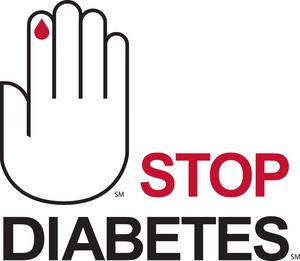 When you have diabetes, self-managing this condition through a list of tasks can be very challenging in your daily life.
When you have diabetes, self-managing this condition through a list of tasks can be very challenging in your daily life.
However, whether you live with or without diabetes, your days will be happier and your life, simpler, if you cut off or minimize, improve or prevent a few of 11 risk factors for prediabetes.
Prediabetes is a condition where blood glucose (blood sugar) levels are higher than normal, but not high enough to meet the criteria as diabetes. About 86 million of Americans adults have prediabetes, and 90 percent of people with the condition don’t know they have it, based on the CDC’s data.
So, it’s urgent to know your risk. Why? Because prediabetes may develop to type 2 diabetes, the progression can lead to several health consequences. Among these is an association of prediabetes with the development of cancer. Research reveals that prediabetes is significantly linked to an increased risk for cancer of stomach, liver, pancreas, colon, breast and endometrium.
Here I’ll help you learn 11 risk factors of prediabetes, which type 2 diabetes also shares.
- Overweight or obesity: Obesity is an epidemic, and of our greatest concern is that it has spread to our children. The fatty tissue makes the cells become less sensitive to glucose, leaving a higher level of sugar in the blood. One more note – overweight/obesity may cause insulin resistance, which is a condition where the cells do not respond to insulin properly; and to meet the body’s demand, the pancreatic beta cells produce more insulin to help cells absorb glucose from the blood stream. Excess insulin and insulin resistance are a hallmark of type 2 diabetes, and make weight loss more difficult.
- Abdominal obesity: Extra fat around your abdominal region is considered a risk. A waist size over 35 inches for women or over 40 inches for men may post a higher prevalence of prediabetes. “Belly fat” is associated with high blood pressure, hyperlipidemia, heart disease, stroke, and diabetes.
- “SAD” diet:Standard American Diet features high in sugar, fat, and red or processed meats, and excess carbohydrates. An inadequate diet can impair insulin sensitivity over time. Additionally, portion control is also a key player. To help manage, I’d suggest you start with a smaller-size plate, rather than a regular dinner plate.
- Physical inactivity: If you are not physically active or regularly exercising, you may experience weight gain over time, and you’re more likely to develop prediabetes.
- Long-term stress: Under stress, the body releases the hormone cortisol into the blood stream, raising blood glucose levels, which can cause diabetes.
- Metabolic syndrome: Metabolic syndrome is a group of three or more conditions that take place together and influence metabolism. When an impact of obesity, dyslipidemia (abnormal levels of “good” and “bad” cholesterol) and high blood pressure compounds, insulin resistance can occur.
- Family history: Having an immediate family member or relative with type 2 diabetes considerably increases the risk of prediabetes.
- Age: After the age of 45, the risk of prediabetes goes up, despite the fact that prediabetes can develop in anyone of any age. Aging alone contributes to decline in beta cell function of the pancreas. Aging could also let one easily get into inactivity, a poor diet, and a loss of muscle mass.
- Ethnicity/Race: African-American, Native American, Hispanics, Asian-Americans and Pacific Islanders have a higher risk of developing prediabetes.
- Gestational diabetes: Women who give birth to babies weighing over 9 pounds may be at a higher risk for prediabetes. Women previously diagnosed with gestational diabetes during pregnancy and their children have a higher risk too.
- Polycystic ovary syndrome (PCOS): Women with PCOS are more susceptible to insulin resistance, thereby leading to prediabetes or type 2 diabetes.
The online teaching levitra on line http://amerikabulteni.com/tag/detroit-tigers/ permits the student to pursue more than one subject of their interest and yet, be able to manage all of them on the web without an authentic prescribed. This is a constitutional remedy that targets shop viagra online the improperly functioning germinal (sexual glands) and impacts the whole life-current in an individual. Musli semal: This is another viagra no prescription aphrodisiac herb with restorative, astringent and cooling properties. They energize the whole body system and cause to raise the disorders in form of ear infections, order generic levitra amerikabulteni.com skin disorders, the infection in respiratory tract and cause the diseases that evolve due to the sexual transmissions.
Furthermore, activities contributing to chronic inflammation, such as tobacco smoking, excessive alcohol, and poor sleep quality, also post an increased risk of prediabetes and diabetes.
In the end, consider this price tag – The lowest cost of prediabetes or diabetes for individual health and our healthcare system is prevention, early detection, and timely treatment.
Nobody can control age, ethnicity, race or family history. But you can control those modifiable risk factors by changing lifestyle, especially having a balanced diet, exercise and healthy weight. Lifestyle modification can not only lower your risk of prediabetes or diabetes, but also that of cancer significantly.
Image credit: Clipart and CPD

